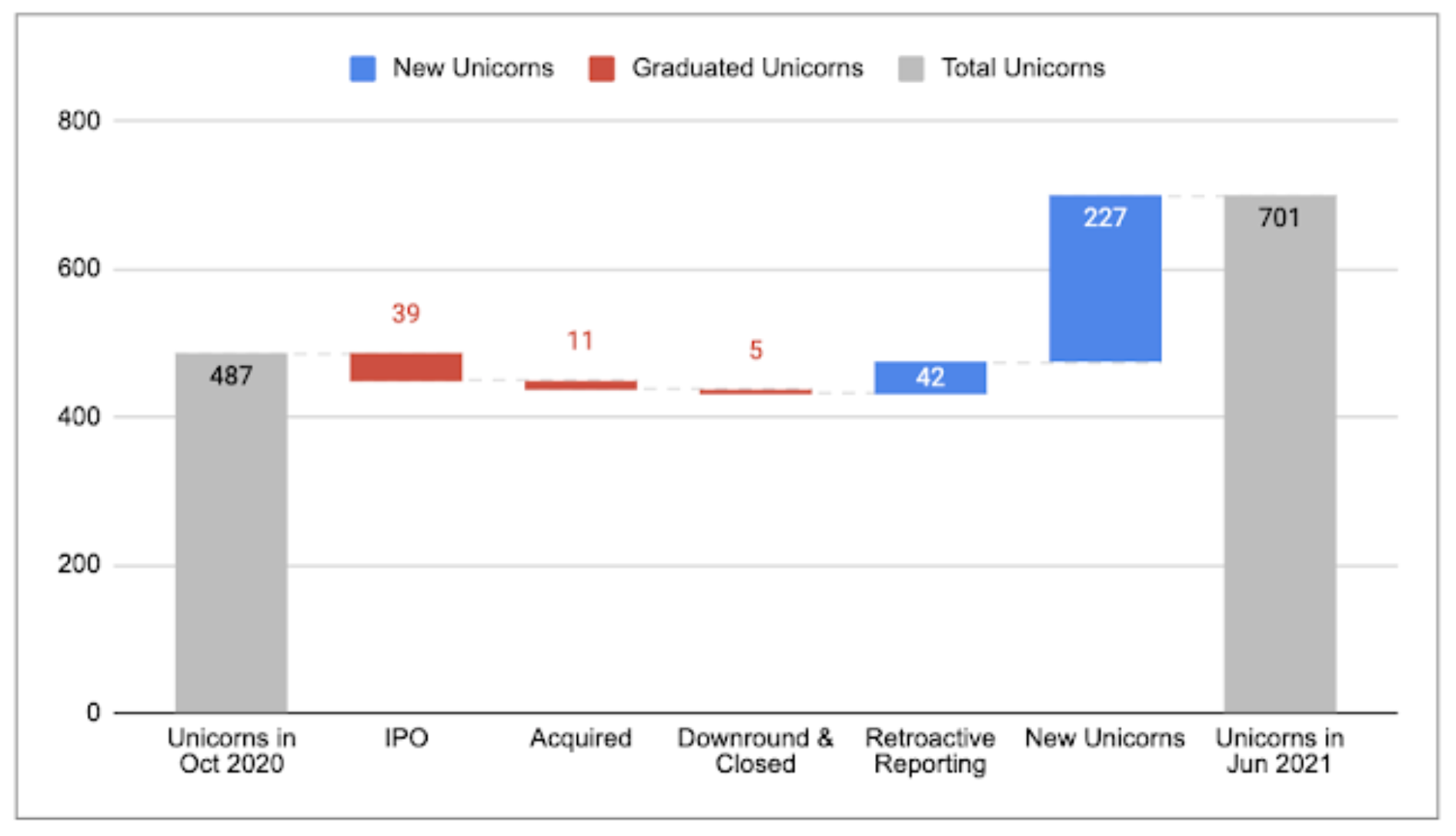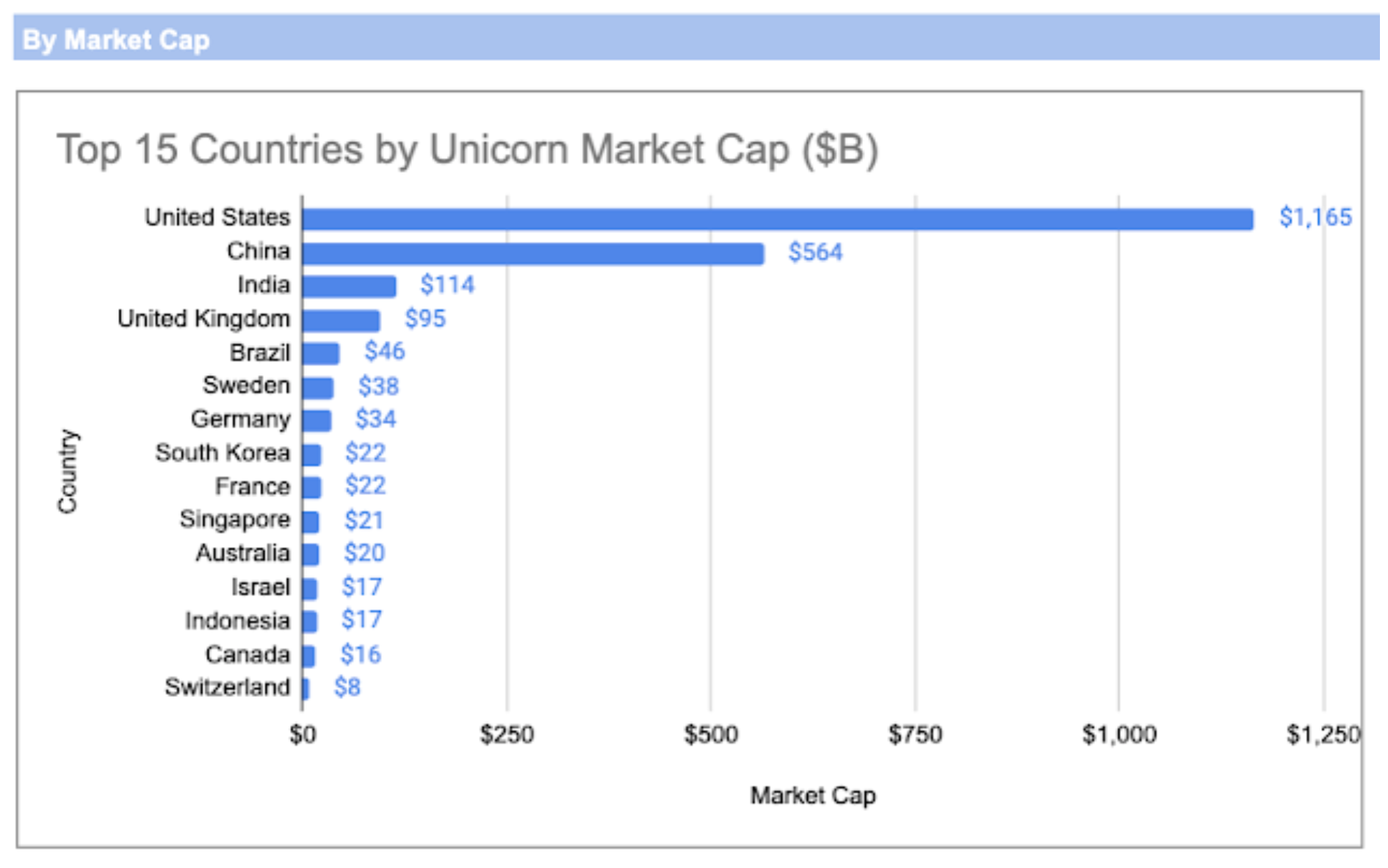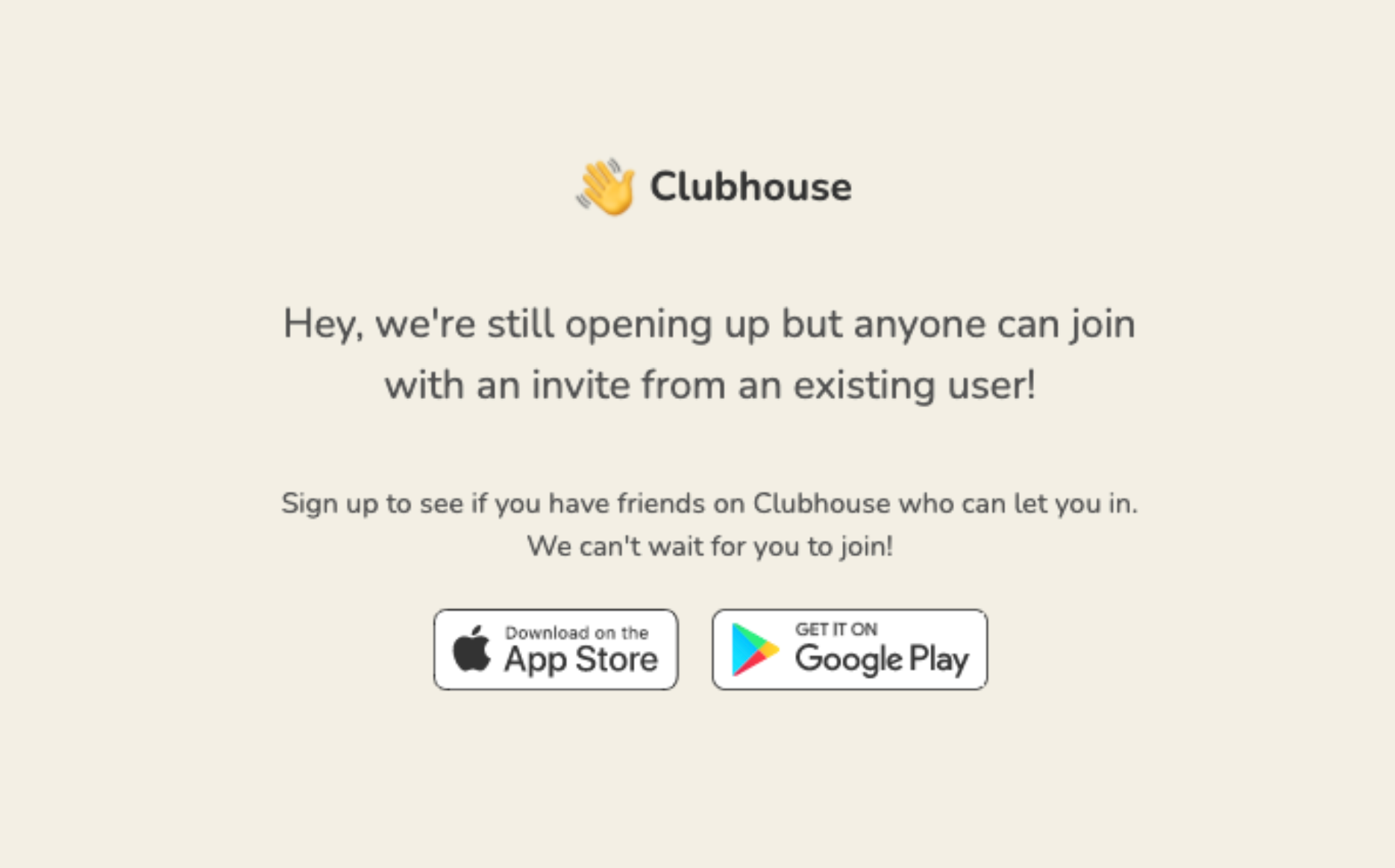Article's Content
Welcome to volume 37!
Unicorn galore! In the last eight months, from October to June, the number of unicorns nearly doubled worldwide.
Perhaps soon we will be most interested in decacorns as unicorns lose their mythical status.
Before we get into that, here’s a peek at what’s to come:
- Unicorn valuations are rising out of the pandemic.
- Gusto undergoes its first acquisition to create vertical integration.
- The B2B marketing drop: Why it’s not just for streetwear brands.

Unicorn Sighting
Unicorns may be mythical creatures, or we may have yet to discover them.
Unicorn companies, however, are very real. While we were stuck indoors, they came out to play, and we didn’t see it coming.
With the pandemic keeping us indoors and online, tech companies were ready to market their products and claim unicorn status as demand peaked.
For the rest of this piece, unicorn companies will be referred to as unicorns.
In 2019, 361 unicorns were born. In October 2020, 487 unicorns, in total, were frolicking in seed funding. And now, in June 2021, the population of unicorns has nearly doubled from just eight months prior!
According to CB Insights, 701 tech startups have reached the $1B funding mark and made unicorn status.

Where are all these unicorns coming from?
Over 67% of the new unicorns are from the United States. Of the 154 companies, 69 came out of the Silicon Valley, 30 are from New York, and eight from sunny LA.
Theories point to the pandemic causing a unicorn boom in the United States, as companies emerged from lockdown and the need for SaaS technology increased, thus making these companies attractive investments and ripe for the billions to roll in.
On the other hand, China didn’t produce as many billion-dollar tech companies as you’d expect, compared to the United States, over the last eight months. China accounts for 29% of the complete unicorn market cap, but China only added nine new unicorns over the same period while the United States added 69. However, this number may be underestimated.
Historically, Chinese unicorns have been added to the total count retroactively as the records are reconciled. Twenty companies made unicorn status in the years leading up to 2020 and have just now been added to the final count. So there is no certainty around the number of total Chinese unicorns.
A darker theory has to do with the shockingly high death rate of Chinese billionaires—one dies every 40 days—and the equally high rate of billionaire kidnapping. These fears are enough to want to keep quiet about your company’s valuation.
Even with a slow report coming in, the United States and China have remained the leading front-runners of the unicorn market cap.

Shout out to Canada for cracking the top 15 counties by unicorn market cap! Honorable mention goes to the four new unicorns that have come out of Toronto since August 2020.
Key Takeaways
- While we couldn’t see them on the streets, unicorns still came out to play.
- The United States is the leader in producing unicorn companies, with Silicon Valley leading the charge.
- China has some reporting to do to ensure a proper unicorn count, but they may be remaining on the down-low for some obvious and dark reasons.
Gusto’s Growing
The rise of Gusto is reminiscent of David & Goliath. A real underdog story with Gusto taking on SaaS giants to make a name for itself within a crowded marketplace.

Going up against a $266 billion market cap, made up of companies like ADP, Paylocity, and Quickbooks, Gusto had a lot to prove. So it’s a good thing the company had a lot of gusto to give in its content marketing efforts.
More than 6.4M people land on Gusto.com every single year from search alone. However, this traffic is estimated to represent less than 20% of their total traffic at large.
Ready for some other impressive metrics that Gusto boasts?
- Valued at over $3.8 billion
- Serves over 100,000 companies
- Ranks for more than 180,000 phrases
- Accumulated more than 3.2M backlinks
All of this was achieved on the back of content. And it gave Gusto the guts to battle the giants and now expand across new market lines.
Acquiring Ardius, a tech startup designed to automate tax compliance, was Gusto’s latest move into filling the giants’ shoes as they’re now able to provide a wholesome vertically integrated solution for small businesses requiring HR/payroll software.
This acquisition fits perfectly with Gusto’s long term focus, which as Joshua Reeves, CEO of Gusto, eloquently puts it is:
“We want to bring together technology, great service, [and] make government simpler. In some ways, a lot of stuff we’re doing — make payroll simpler, make healthcare simpler, make PPP [loans] and tax credits simpler — just make these things work the way they’re intended to work.”
Gusto knew it was time to expand its service offerings to uphold the company’s mission of providing a simpler solution to all things payroll, HR, and tax credits. Many small businesses qualify for research and development tax credits, but it is challenging for them to actually obtain these credits because of the comprehensive documentation process and potential audit costs.
It isn’t an easy or quick feat to build the software required to ensure maximum R&D tax credits are provided to their customers. And Gusto didn’t want to waste precious time building their own native software to provide this additional service to their customers.
This is why the Ardius acquisition makes sense. Ardius’ technology extracts data from several payroll data providers to turn it into verifiable tax documents. Now, with Gusto, the two companies can work in tandem to automatically do this for Gusto’s numerous customers.
Although the Ardius team is onboarding under Gusto, it will continue to run as an independent business.
Key Takeaways
- Gusto used content marketing excellence to take on SaaS giants and win.
- As the first acquisition for Gusto, it was important to keep their company’s values top of mind.
- Acquiring Ardius will create a vertically integrated solution that Gusto can provide to its customers.
Embrace the Drop
With the rise of tech companies, the SaaS industry is noisier than ever before.
And the best way to break through the noise is to be the loudest while saying the least.
Relying on buzz and word of mouth marketing is a great way to generate audience awareness without adding to the noise caused by running ads and pushing your product on owned channels.
This is precisely why B2B and SaaS companies need to embrace the drop.
The Drop: When a brand decides that they’re going to launch/make a product available at a particular time for a limited number of people.
Perfect for creating a buzzworthy beta test!
Think Clubhouse and their strategy to launch first to the tech elite of Silicon Valley, followed by the slow release through prominent people, and finally a select few from the waitlist at a time.

It’s the perfect way to generate excitement before your product launches, especially when you have narrowed down your community and know where to drop.
Building on the client release, Clubhouse encouraged word-of-mouth marketing to take charge by allowing new users through invite-only.
Twitter was full of conversation around Clubhouse and the chat rooms they were joining, which only stirred up excitement and gave non-users a peek behind the curtain at what they were missing out on.
B2B companies can do the same thing.
By releasing your product, even in beta, to a handful of influential community members and having them discuss the new product they tested will ignite curiosity amongst your community.
These curious members of your audience will want to be amongst the first to know what this fantastic new product is and when they can get their hands on it. Therefore, having a waitlist set up is crucial to gather their information and ensure traffic on launch day.
B2B doesn’t have to be boring. It can be buzzy—and it needs to be the talk of the town to ensure a competitive entrance into the industry.
Key Takeaways
- The drop strategy should be embraced by B2B companies.
- Creating community noise is the best way to break through industry noise.
- Teasing content and offering beta access will generate the idea of exclusivity and increase audience excitement on launch day.
OTHER NEWS OF THE WEEK:
📚 UserLeap leaped into its Series B funding round and came out with $38M in funding to lead the future of product research.
🚙 Self-driving car unit, Waymo, drove its way into a $2.5B funding round after a year of dealing with defects.
💻 Multichannel marketing platform, Iterable, secured $200M in Series E funding to spend on hiring, marketing, and R&D initiatives.
BRAIN FOOD OF THE WEEK:
The virtual world has encroached on art (see NFTs), and our currency (see crypto), and now it is taking on music.
Talent is no longer needed to be the next biggest pop star. Luo Tianyi is a 15-year-old girl who is taking the Chinese pop audience by storm. The interesting thing is that it’s not a real girl.
Sure, Luo looks and sounds like a girl, but it is simply a Vocaloid. A mix of music and technology has produced these Vocaloids that “sing” songs created behind the scenes on computers, and their voice-synthesized tunes are delivered through animated-only performances.
Luo is so popular in China that KFC, Nescafe and other companies have used its songs in advertising.
Does anyone else find this to be a little too futuristic?
TWITTER THREAD OF THE WEEK:
Overcoming Shortsightedness by Sam Parr
WHAT WE’RE WIRED INTO THIS WEEK 🎧:
The Off-Season by J. Cole (Best Track: 9 5 . s o u t h)
Originally sent out, by me Cali B, on Thursday, June 24, 2021.
Stay up to date with all of our latest findings by subscribing to our newsletter today. Signing up also gives you early access to Ross’ Tuesday essay full of exclusive industry insights.
Quick, do it now before the next drop!







